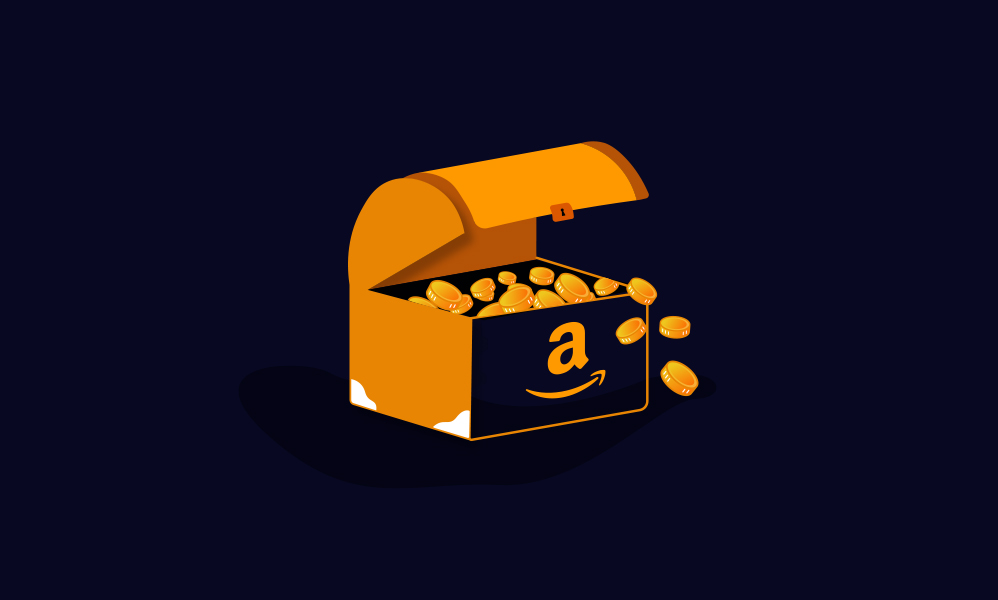Amazon Briefing: After a disastrous two years, here’s how aggregators are valuing brands now

This is the latest installment of the Amazon Briefing, a weekly Modern Retail+ column about the ever-changing Amazon ecosystem. More from the series →
2024 has already been a rough year for e-commerce aggregators. What’s a brand to do?
Only a few years ago, roll-up companies like Thrasio and Perch were the toast of the e-commerce town. They raised billions of dollars touting the promise of a revamped P&G model — they would scoop up online brands, fold them into one umbrella company and, through the volume, profit.
Now, we’re witnessing an industry contraction. Thrasio, which raised $3.4 billion in equity and debt over the last few years, filed for bankruptcy last month. Win Brands Group has had multiple rounds of layoffs, as Modern Retail recently reported. Perch was acquired by competitor Razor Group. And, most recently, Kite, the Blackstone-backed e-commerce platform, reportedly shut down.
But, where does that leave brands? According to the aggregators that still exist, deals are still on the table. But the high-flying valuations seen in 2021 are no longer available. What’s more, sales velocity on Amazon is no longer the be-all-end-all — aggregators are looking for bonafide brands.
New data provides a window into what brands should expect if they’re trying to exit. A recent presentation from the investment bank Fortia Group, which specializes in e-commerce brand sales, said that the average valuation a profitable brand received in the fourth quarter of 2023 was between 2X and 6X of its EBITDA. That’s better than the 2023 multiple maximums of 4.5X, but less than the glory days of 2020 and 2021 when brands were able to sell themselves for upwards of 7X.
For Amazon brands specifically, said Emmett Kilduff, founder and CEO of Fortia Group, the valuations are most commonly seen at between 2.5X and 4.5X. “That’s a typical range for profitable revenue-growing FBA brands,” he said.
That being said, even though the valuations have significantly cooled compared to three years ago, Kilduff is bullish about the year to come. “We’ve had a lot more inbound 2024 year-to-date, from high-quality entrepreneurs,” he said. “You’re seeing an uptick in interest.”
In some ways, it’s difficult to square this with the headlines. In Kilduff’s estimation, what we’re witnessing now is the light at the end of the tunnel. Over the last two years, M&A transactions have declined. We’re now seeing the operators either sell or go bankrupt as a result of the dampened deal flow. But Kilduff pointed to a recent slide from a Goldman Sachs presentation that looked at decades worth of M&A activity and found that industry declines have historically never exceeded two years. “It tells us volume should increase in 2024,” he said.
What that volume looks like is the million-dollar question. For one aggregator, the new focus is on fine-tuning the acquisition thesis.
Olsam, a U.K.-based aggregator that launched in 2020, has raised hundreds of millions of dollars in both equity and debt. Its initial focus was on Amazon brands in Europe that wanted to expand into new geographies. Now, said co-founder Sam Hörbye, “our M&A strategy is shifting.”
The major realization that Olsam has had over the last few years is that being successful on Amazon is no longer enough. “I think that businesses that are 100% Amazon-only, with no IP and no brand, are worthless — not even purchasable,” said Hörbye. Thus, Olsam is now looking for brands that, along with proving sales velocity, have established themselves as brands.
This has meant fewer deals, but more valuable assets. “We’re buying larger,” Hörbye said. When his firm first launched, it would consider some companies that brought in half a million dollars. “Now, it’s a baseline of $2 million profit-at-base.”
Similarly, the company is looking for traction beyond Amazon’s marketplace. “In ’21 and ’22, [our acquisitions] were 100% Amazon FBA businesses,” he said. “Now, we love businesses that are multichannel.”
It points to an overall reframing of the original business proposition. In an earlier conversation with Modern Retail, Juozas Kaziukėnas, founder and CEO of Marketplace Pulse, spoke about the way aggregators are changing their pitches.
“The industry is much more quiet and much more deliberately trying to readjust and find something that works while trying to find some way to survive,” he said. “It’s not that roll-ups don’t work — it’s that the particular strategies of the roll-ups don’t work.”
As such, aggregators are pitching themselves as more niche platforms focused on something beyond acquisition at scale. If a company describes itself as an Amazon-only aggregator, “that phrase will get you deleted from the [investor’s inbox],” said Kaziukėnas.
Still, others see a glimmer of hope, so long as they find the right brands to help the overall firm grow profitably. “The volumes of deal flow are going to increase in 2024,” Kilduff said. “We’re not going to get back to the lofty days of December 2021, but if the economy improves, even next year you should see a slight uptick.”
Amazon news to know
- Amazon Pharmacy has inked a deal with Eli Lilly to fulfill orders for certain prescriptions including its weight-loss products.
- Amazon’s non-search ad products are gaining steam with agencies as they diversify away from Meta and Google.
- Amazon launched a new seller tool that uses AI to create product pages that requires only entering a link to the brand’s DTC site.

